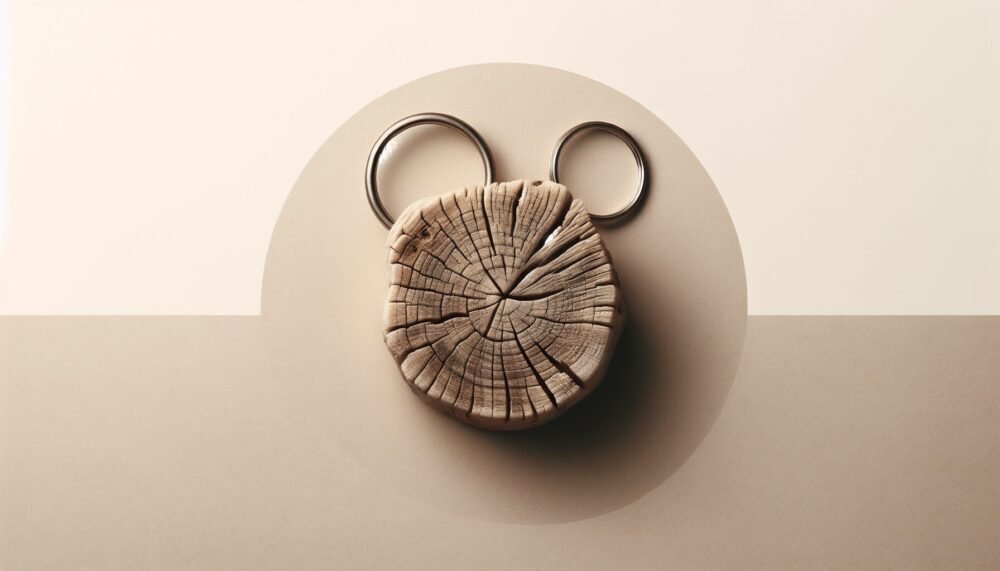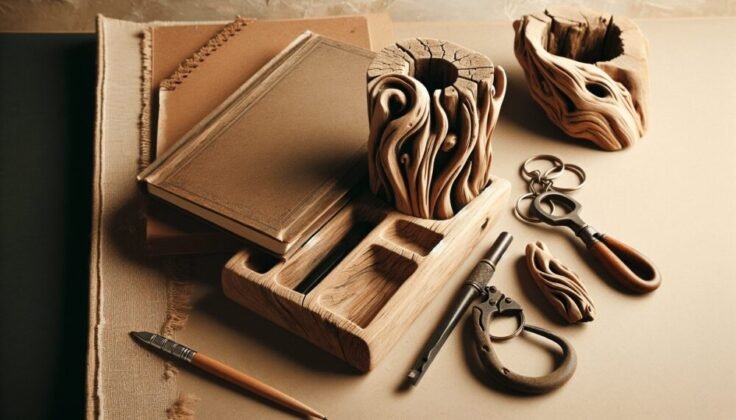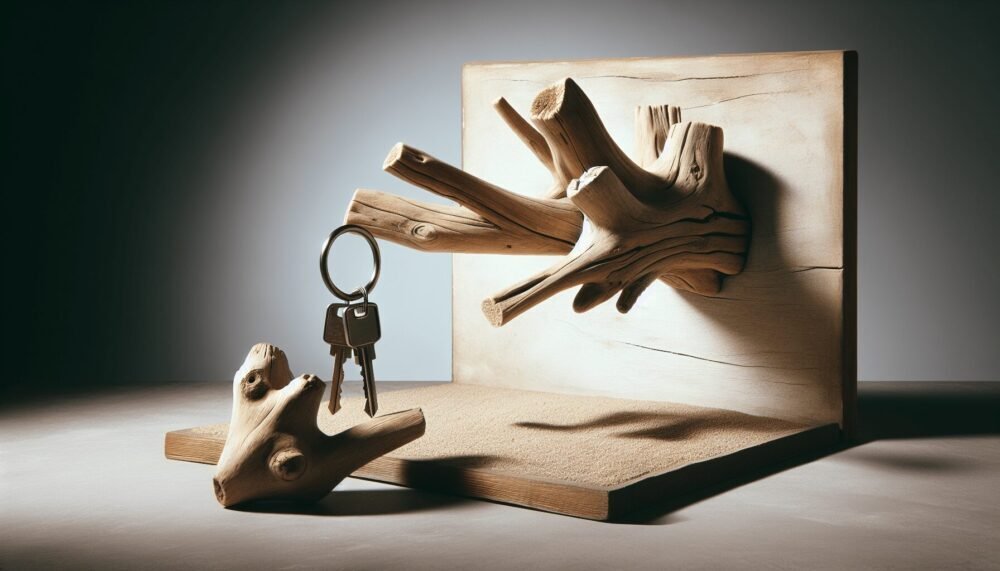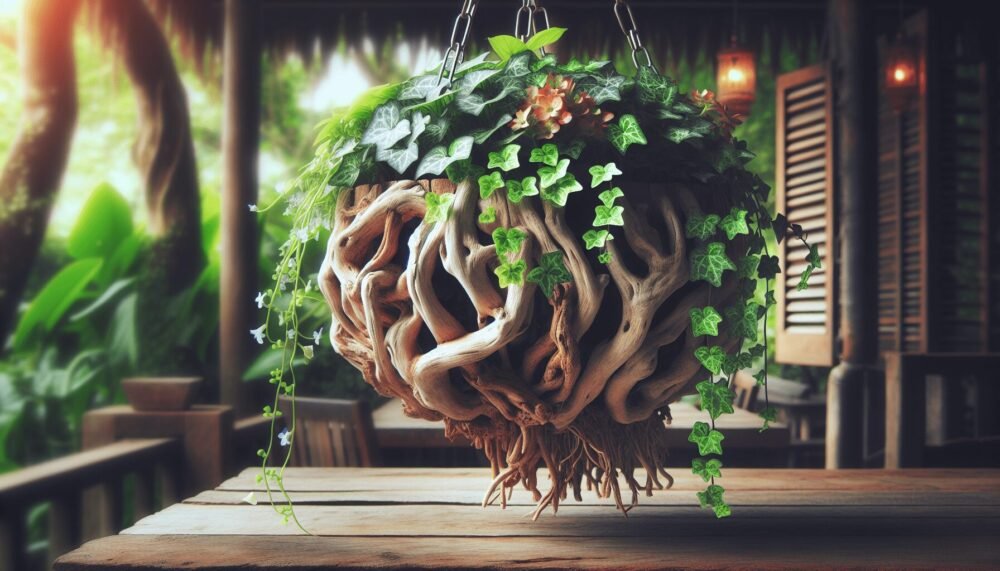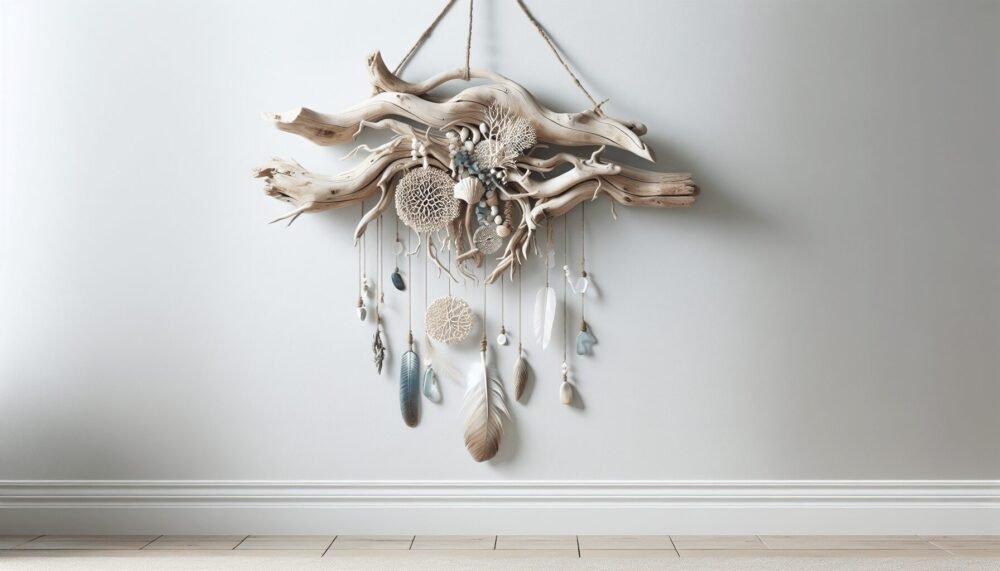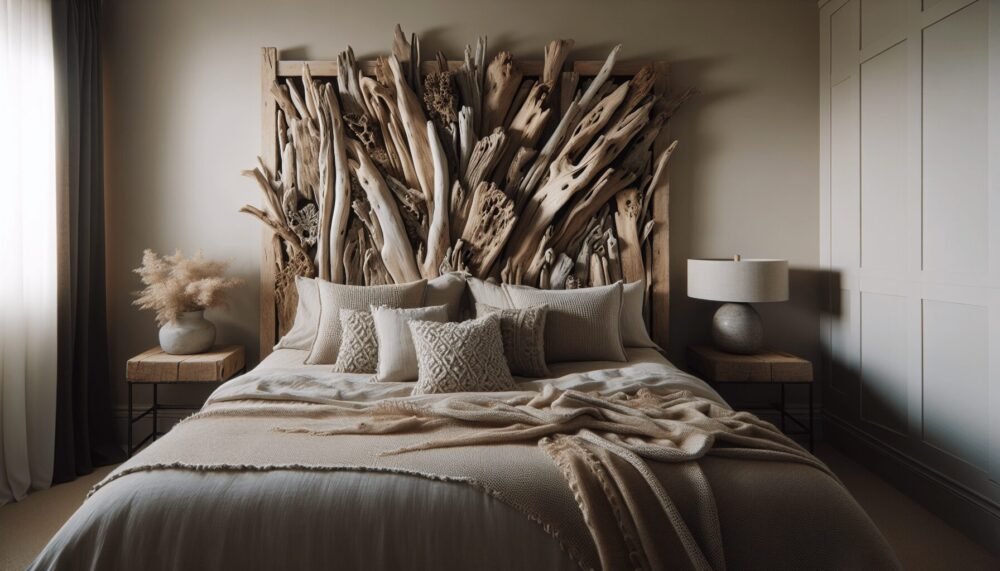Have you ever stumbled upon a piece of driftwood washed ashore and wondered about its story? Maybe even thought about taking it home as a keepsake? Driftwood is nature’s art, shaped by the sea and time. Driftwood keyrings combine the natural beauty of this material with functionality, yielding a unique and charming accessory.
What is Driftwood?
Driftwood refers to wood that has been washed onto shores by the action of winds, tides, or waves. Over time, this wood undergoes a natural process of erosion and refinement, resulting in a smooth, worn look. It’s often found along beaches, riverbanks, and lakeshores, each piece telling its own story through its unique shapes and textures.
Driftwood can be utilized in various forms of decoration, but one of the most practical and charming uses is turning it into keyrings. These pieces serve both as a functional tool and a small memento of nature, making them perfect for anyone who wants to carry a piece of the outdoors with them.
Why Choose Driftwood Keyrings?
Choosing a driftwood keyring means you’re opting for something natural, eco-friendly, and extraordinarily unique. Mass-produced keyrings lack character and individuality, whereas no two pieces of driftwood are the same. Let’s unpack some compelling reasons to consider driftwood keyrings.
Unique Aesthetic
Every piece of driftwood is distinct. The natural curves, textures, and color variations make each keyring a one-of-a-kind masterpiece. It’s like carrying a small piece of art in your pocket.
Eco-Friendly
Driftwood is naturally occurring and doesn’t require the felling of trees, making it a sustainable option. By repurposing driftwood, you’re helping reduce waste and supporting eco-friendly practices.
Durability
Driftwood is surprisingly durable. Its time spent in water makes it more resistant to elements, ensuring that your keyring will stand the test of time.
Sentimental Value
If you collect driftwood during memorable trips or occasions, turning them into keyrings can preserve those memories in a tangible form. It’s like carrying a little piece of your adventures wherever you go.
Conversation Starter
A unique driftwood keyring can be a great icebreaker. People are often curious about the stories behind personalized, unique items, and your keyring can lead to interesting conversations about your travels and the beauty of nature.

Types of Driftwood for Keyrings
When crafting your driftwood keyring, the type of wood you select can influence the final product’s appearance and durability. Here are some common types of driftwood that are ideal for keyrings.
| Type of Driftwood | Characteristics | Durability |
|---|---|---|
| Cedar | Light, aromatic, and resistant to decay. | High |
| Pine | Often found lighter in color, and soft-grained. | Moderate |
| Oak | Dense, hard, and darkens over time. | High |
| Redwood | Reddish hue and less prone to shrinking or warping. | High |
| Birch | Smooth, pale, and often has a fibrous texture. | Moderate |
| Maple | Light-colored and tight-grained. | High |
Different types of driftwood will offer various looks and textures, so you have plenty of choices to match your personal style or the style you’re aiming to achieve.
How to Make Your Own Driftwood Keyring
Making your own driftwood keyring can be a rewarding DIY project. Here’s a step-by-step guide to help you get started.
Materials Needed
Before you begin, gather all the necessary materials. Here’s a basic list:
- A piece of driftwood
- Sandpaper (various grits)
- Hand drill
- Keyring hardware (split ring, chain, etc.)
- Protective finish (like beeswax or tung oil)
Step 1: Selecting the Driftwood
Choose a piece of driftwood that’s small enough to be a keyring but large enough to be durable. It should feel comfortable in your hand and have minimal cracks or weaknesses.
Step 2: Preparing the Driftwood
Clean the driftwood thoroughly with a mild detergent and water to remove any dirt or debris. Let it dry completely. Sand the driftwood using different grits of sandpaper to achieve a smooth finish.
Step 3: Drilling the Hole
Using a hand drill, carefully drill a small hole at one end of the driftwood. The hole should be large enough to accommodate the keyring hardware but small enough to maintain the piece’s integrity.
Step 4: Adding the Keyring Hardware
Thread the keyring hardware through the drilled hole. Ensure that it is securely attached and can rotate freely without falling off.
Step 5: Applying the Finish
Apply a protective finish to your driftwood keyring to enhance its durability and appearance. Beeswax, tung oil, or a clear sealant can all work well for this purpose.
Step 6: Final Touches
Inspect your keyring for any rough spots and sand them down if needed. Your driftwood keyring is now ready to use!

Caring for Your Driftwood Keyring
To ensure that your driftwood keyring remains beautiful and durable, you’ll need to take some care of it. Here are a few tips:
Regular Cleaning
Wipe your keyring with a damp cloth to remove any accumulated dirt or grime. Avoid using harsh chemicals or soaking the driftwood, as this can weaken it.
Protective Finish
Reapply a protective finish periodically, especially if the driftwood becomes dry or starts to show signs of wear. This will help maintain its appearance and strength.
Avoid Extreme Conditions
Driftwood is naturally resilient, but extreme conditions can still cause damage. Avoid exposing your keyring to extreme heat, moisture, or cold for prolonged periods.
Personalizing Your Driftwood Keyring
One of the joys of owning or creating a driftwood keyring is the ability to personalize it. Here are some ideas for making your keyring uniquely yours:
Wood Burning
Use a wood-burning tool to etch designs, initials, or symbols onto your driftwood. This can add a custom touch and make your keyring truly one-of-a-kind.
Paint or Dye
Consider adding a splash of color with paint or natural dyes. You can create intricate designs or simple colorful accents to match your style.
Add Beads or Charms
Thread small beads or charms onto the keyring hardware for extra decoration. You can use materials like glass, metal, or even small seashells to complement the driftwood.
Engraving
If you lack the tools for wood burning but still want to add a personalized touch, consider having your driftwood piece professionally engraved.
Buying Driftwood Keyrings
If DIY isn’t your style, there are plenty of places to purchase beautifully crafted driftwood keyrings. Here are some options:
Online Marketplaces
Websites like Etsy feature numerous artisans who sell handmade driftwood keyrings. You can browse a wide range of designs and even request custom orders.
Craft Fairs
Local craft fairs and markets are excellent places to find unique, handmade driftwood keyrings. Plus, you can often meet the artisans and learn more about their process.
Specialty Stores
Some specialty stores focus on natural, eco-friendly, or handmade items. These stores often carry driftwood keyrings as part of their product range.
Driftwood Keyrings as Gifts
Driftwood keyrings make excellent gifts for various occasions. They’re personal, unique, and thoughtful, making them perfect for:
Souvenirs
Traveling to a coastal area? Bring back a piece of driftwood and turn it into a keyring. It makes for a memorable and unique souvenir.
Weddings
Driftwood keyrings can serve as unique wedding favors, especially for beach or nature-themed weddings. You can even engrave the couple’s initials or the wedding date on each piece.
Birthdays
Gift a driftwood keyring to nature-loving friends or family members. Personalize it with initials, a favorite symbol, or a special message.
Corporate Gifts
Looking for eco-friendly corporate gifts? Driftwood keyrings can be customized with company logos or mottos, making them both unique and sustainable options.
Driftwood Keyrings: A Symbol of Nature
Driftwood keyrings are more than just functional accessories; they symbolize nature’s beauty and resilience. Each piece of driftwood carries with it the essence of its journey, shaped by water, wind, and time. By using driftwood, you’re not only embracing a piece of nature but also contributing to sustainable practices.
In a world increasingly driven by mass production, choosing something handcrafted, natural, and unique stands out. A driftwood keyring is a small but significant step towards appreciating the simpler, more beautiful things in life.
Conclusion
Crafting or purchasing a driftwood keyring is an excellent way to connect with nature and introduce a touch of uniqueness into your daily life. Whether you make your own or buy one from an artisan, a driftwood keyring is a testament to the enduring beauty and versatility of nature. Each piece is a story, waiting to be part of yours.
So next time you find yourself wandering along a beach or a riverbank, keep an eye out for a piece of driftwood that catches your attention. You may just find the perfect candidate for your next favorite accessory.

